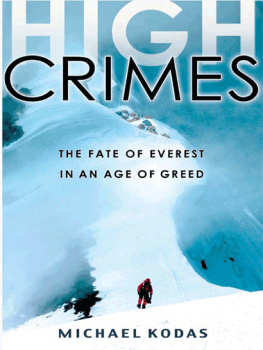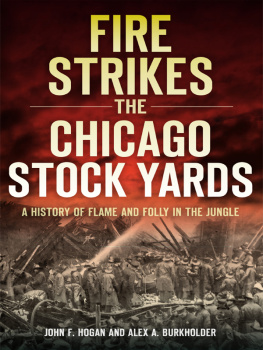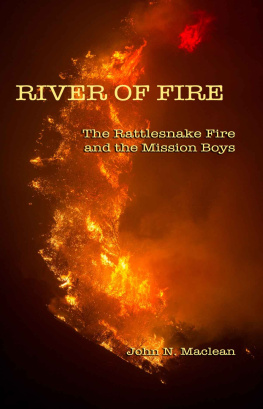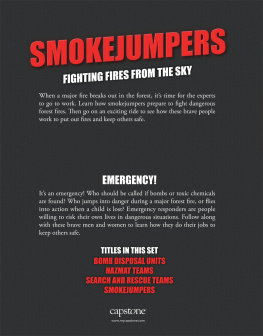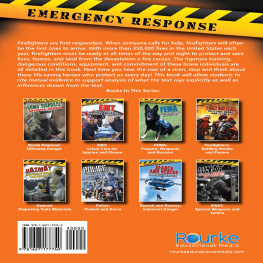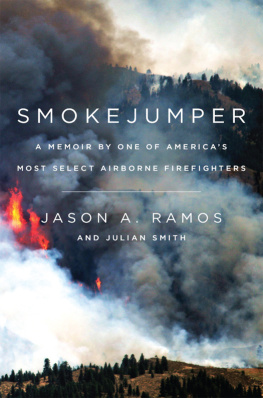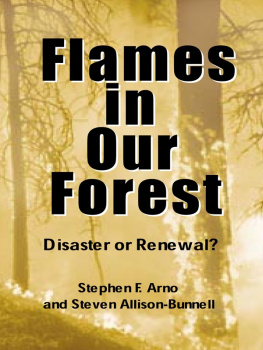Copyright 2017 by Michael Kodas
All rights reserved
For information about permission to reproduce selections from this book, write to or to Permissions, Houghton Mifflin Harcourt Publishing Company, 3 Park Avenue, 19th Floor, New York, New York 10016.
www.hmhco.com
Library of Congress Cataloging-in-Publication Data is available.
ISBN 978-0-547-79208-8
The Hotshot Prayer written by Patricia Huston, as adapted by Brendan Donut McDonough. Copyright 2002 by Patricia Huston. Adaptation copyright 2013 by Brendan Donut McDonough. Reprinted by kind permission of Patricia Huston and Brendan Donut McDonough.
Cover design by Brian Moore
Cover photograph Kevork Djansezian / Getty Images
eISBN 978-0-547-79212-5
v1.0717
To Melvin, who taught me to respect the men and women who do hard, dangerous work; and to Anita, who taught me to care about them.
For the 19 fallen Granite Mountain Hotshots and the other 30 wildland firefighters who perished while I reported this book.
Prologue
T HE FOURMILE CANYON FIRE BROKE OUT on Labor Day 2010, while my wife and I were moving into a cottage in the Colorado Chautauqua, a National Historic Landmark and park overlooking Boulder.
Our home for the year at the foot of the Flatironspinnacles of red rock that define the citys skylinecarries a rugged, rustic status. The historic dining hall and auditorium 100 yards below our cottage hosted Teddy Roosevelt a century before we moved to the park and bands such as Los Lobos after we arrived. At night we listened to the concerts from the easy chairs on the cottages front porch while staring at the lights of the city sprawling below a forest of stars. In the morning we looked out on hot air balloons ascending in the sunrise. On game days we could see the crowds and hear the cheers in the stands of the University of Colorados football stadium. The panorama of dark mountain forests descending to the glowing city highlighted what made Boulder County one of the fastest-growing counties in the West.
The cottages interior was as rough-hewn as the Rockies. Ancient knob-and-tube electrical wiring drooped from the ceilings. A cockeyed brass chandelier seemed like it might burst into flame if you looked at it wrong. The windows sat off kilter in their sills. Stinkbugs and box elder beetles didnt even have to slow down to fly inside through the gaps. Sunlight beamed between the slats into the dim, dusty interior.
Between the wiring, the wood, and the trees surrounding the cabin, our new life seemed almost designed to burn, but the charm of the location all but blinded us to that. We raved about the delicious apples that fell from the tree overhanging the front gardens, but never discussed the fire hazard posed by the pine needles that piled up in the corners of the roof and the century-old clapboards.
As we unloaded our boxes, we heard the first planes and choppers buzz over our heads on their way to the wildfire that was already devouring homes. We listened to a police scanner on a laptop and wondered how quickly the ancient wooden cabin would ignite if a firebrand landed on it. I quit unpacking and climbed to the top of the First Flatiron. From there, more than 1,000 feet above our new home, I could see the column of smoke rising five miles away.
On the shoulder of Flagstaff Mountain, farther west, I joined nearly 100 other Boulder residents looking out on the flames spreading over Sunshine Canyon and Sugarloaf Mountain. The vista was similar to the one I had over the city from my porch, but the scene wasnt nearly so idyllic. Instead of balloons in the sunrise, we watched air tankers paint red crescents in the sky just above the flaming pines. We could see some of the more palatial homes in the canyons and watched as the fire worked its way among them. The houses didnt explode, but gradually showed a tiny bit of red around their bases or on their roofs.
That ones going up, someone would shout as soon as they saw the slightest glow. Sometimes the houses burned fast, but usually it took 30 minutes or more for them to become fully engulfed. Despite covering dozens of wildfires, and fighting them over a summer, this was the first one I saw destroy peoples homes.
The Fourmile Canyon Fire burned 169 residences and was the first of four fires in four years that would break the most destructive fire record in Colorado. While it never threatened Chautauqua or our cottage, it did burn away many of the ideas I had about wildfire. The houses of Fourmile Canyon would be rebuilt long before I filled those voids in my understanding.
Five years later a fire more than a thousand miles away hit even closer to home. In Lake County, California, my brother Jeff was living in a cabin similar to our onetime home in Chautauqua. During the height of the summer of 2015 the Rocky and Jerusalem Fires burned within a dozen miles of Jeffs cabin. Then, in September, the Valley Fire burned 76,067 acres through the mountains where he lived.
Wed been seeing it all summer, he told me when I called. I saw the smoke over here and thought, Oh, shit, here we go again.
As the blaze came toward his cabin, Jeff found that his truck wouldnt start. He was left with a tiny, two-door sports car to carry anything he wanted to save and raced away with his girlfriends paintings and silk screens, some jewels and gold, a few tools, and two cats (one would escape his grasp while he searched for a shelter and perish in the flames).
During the following days he did what he could to help others who were evacuatinggathering pets, turning off electricity, and leading a disabled friend away from the fire. Eventually he found himself alone on a ridgeline, where he watched the panorama of fire.
I could see for milesalmost all the way to the East Bay, Jeff, an unflappable marine veteran who served in Vietnam, said. It was like that mountain got napalmed and rocketed all at once.
By then he was certain that his own home had burned.
Going back out the last time was like driving out through the apocalypse, he said. Whole neighborhoods have just vanished. Theyre gone.
By the time my niece and her mother, who live in nearby Cobb, gathered their pets and some valuables, the flames surrounding the town were so thick that they couldnt drive through them. They parked on a golf course, where treeless greens, water hazards, and sand traps provided a refuge in the orange night. Their home survived, but many of the ones around it, and most of nearby Middletown, burned. They couldnt return home for weeks.
The Valley Fire burned more than 1,300 homes and killed four residents,
I covered my first forest fire nearly 30 years before the Valley Fire burned my brothers home. I fought fires in the Rocky Mountains a decade before the Fourmile Canyon Fire blazed outside Boulder. But the new fires were different from the ones Id photographed, reported on, and fought years before. Some scientists and firefighters were calling the worst of them megafires, but others bristled at the terms sensationalism and lack of scientific precision.
During the five years between the fire outside my hometown, which began the series of record-breaking fires in Colorado, and the one that burned down my brothers cabin and topped off a year in which the most acreage in the nation burned, I tried to learn what was driving fires to be so much larger, faster, hotter, and more destructive. It seemed like that question would be easy to answer, particularly with the worlds first conference studying megafires announced soon after the fire that threatened Boulder.
But just defining megafire proved more difficult than Id anticipated.
T HE CONFERENCE WASNT IN A VAST , western forest under a scorching summer sun, but in a hotel auditorium in Tallahassee, Florida, a week before Thanksgiving 2011. The opening speaker was the first person I had contacted about megafiresthe man who had coined the term. Jerry Williams was once the national director of fire and aviation management for the U.S. Forest Service, and thus the top wildland firefighter in the United States. He was the first to warn of an explosion of wildfires that would see the amount of land burning in the United States triple since the 1970s. (During the conference scientists predicted that in some years U.S. fires would burn almost seven times the amount of land burned in an average year in the 1970s.)
Next page

